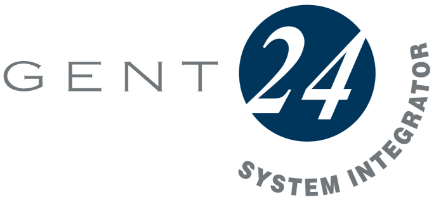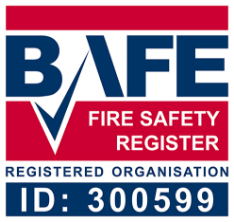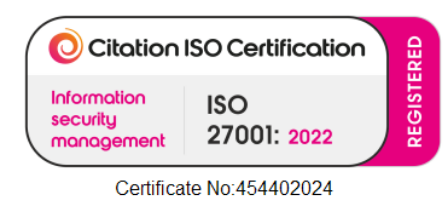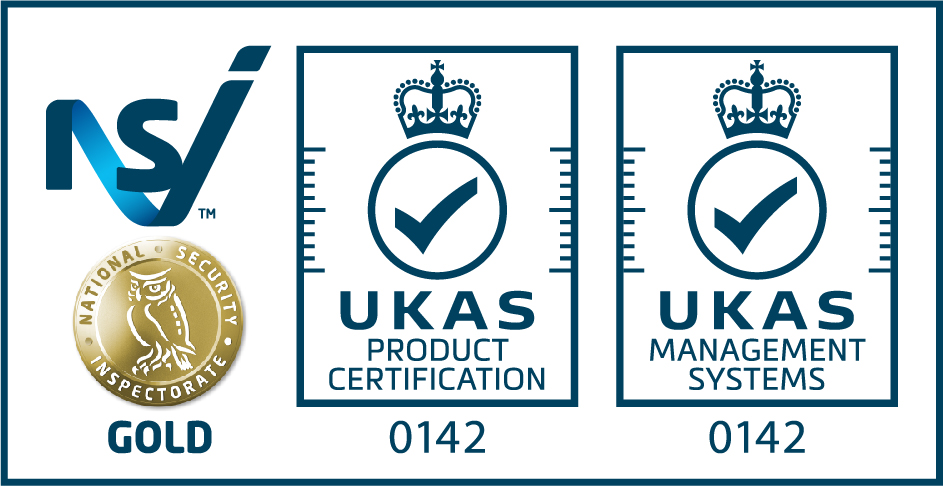Businesses face mounting security challenges in 2025, making access control systems for business more critical than ever. Sophisticated breaches are on the rise, and traditional methods no longer suffice.
Modern access control systems for business offer robust protection, help you meet compliance requirements, and streamline daily operations. These systems can safeguard your assets and maintain a secure environment for staff and visitors.
This guide will give you practical insights into the latest access control technologies, types of systems, key benefits, selection tips, compliance standards, and what to expect for the future. By following these steps, you can strengthen your security posture and stay ahead of emerging threats.
Understanding Access Control Systems for Business
Modern businesses face growing security challenges, making it crucial to understand how access control systems for business protect assets, data, and people. These systems are no longer a luxury but a vital part of operational security, especially for companies handling sensitive information or operating across multiple locations.
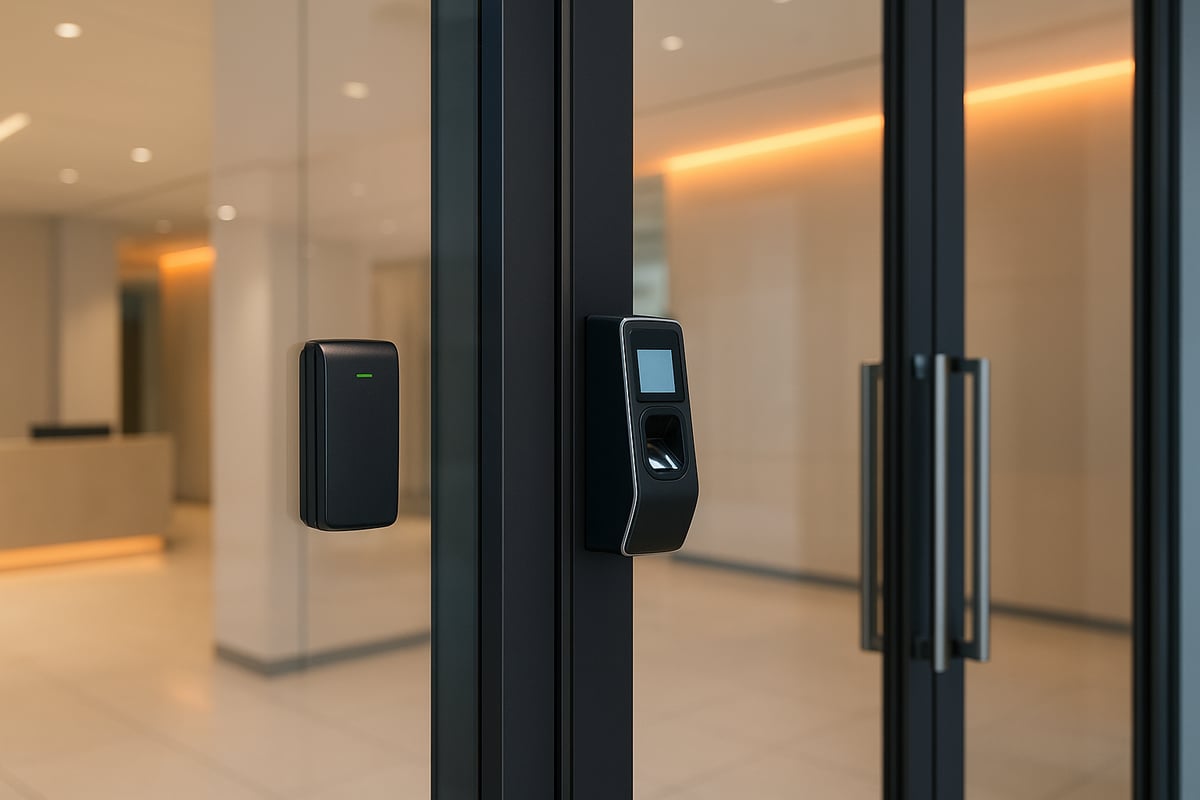
What Are Access Control Systems?
Access control systems for business are designed to manage and regulate who can enter or exit specific areas within commercial premises. At their core, these systems consist of four main components:
- Credentials (such as cards, PINs, biometrics)
- Readers (devices that validate credentials)
- Control panels (decision-making units)
- Software (management interface)
They can be divided into physical access controls (restricting entry to buildings or rooms) and logical access controls (protecting digital assets and networks). For example, an office may only allow authorised staff into server rooms using a secure keycard or fingerprint.
In multi-site or high-traffic environments, robust access control systems for business ensure only approved individuals gain entry, reducing the risk of internal and external threats. For more details, see Access Control Entry Systems.
Types of Access Control Systems
Businesses can choose from several types of access control systems for business, each offering unique features:
| System Type | Credentials | Key Benefit | Ideal For |
|---|---|---|---|
| Standalone | Keycards, PINs | Simple setup | Small offices |
| Networked | Cards, biometrics | Central management | Medium enterprises |
| Cloud-based | Mobile, biometrics | Remote access | Multi-site businesses |
Standalone systems are cost-effective and easy to install but lack scalability. Networked systems offer centralised control and integration options. Cloud-based systems enable remote management and real-time updates, making them suitable for growing firms. Credentials can include keycards, PIN codes, biometrics, or even mobile access via smartphones.
The right choice depends on your company’s size, sector, and security needs.
The Business Case for Access Control
Investing in access control systems for business delivers proven security and operational benefits. These solutions reduce unauthorised access, theft, and vandalism by creating audit trails and custom access levels. Integration with HR and time management systems streamlines employee oversight.
From an insurance and liability perspective, robust systems can lower premiums and ensure legal compliance. According to NSI, businesses with integrated access control report up to 50% fewer security incidents. For example, retailers have successfully reduced stock shrinkage by monitoring and limiting access to sensitive areas.
Ultimately, access control systems for business support a safer, more efficient workplace while safeguarding assets and reputation.
Latest Access Control Technologies and Innovations for 2025
The landscape of access control systems for business is evolving rapidly as new technologies emerge. In 2025, organisations are prioritising solutions that offer robust security, flexibility, and sustainability. Let us explore the most significant innovations shaping business security.
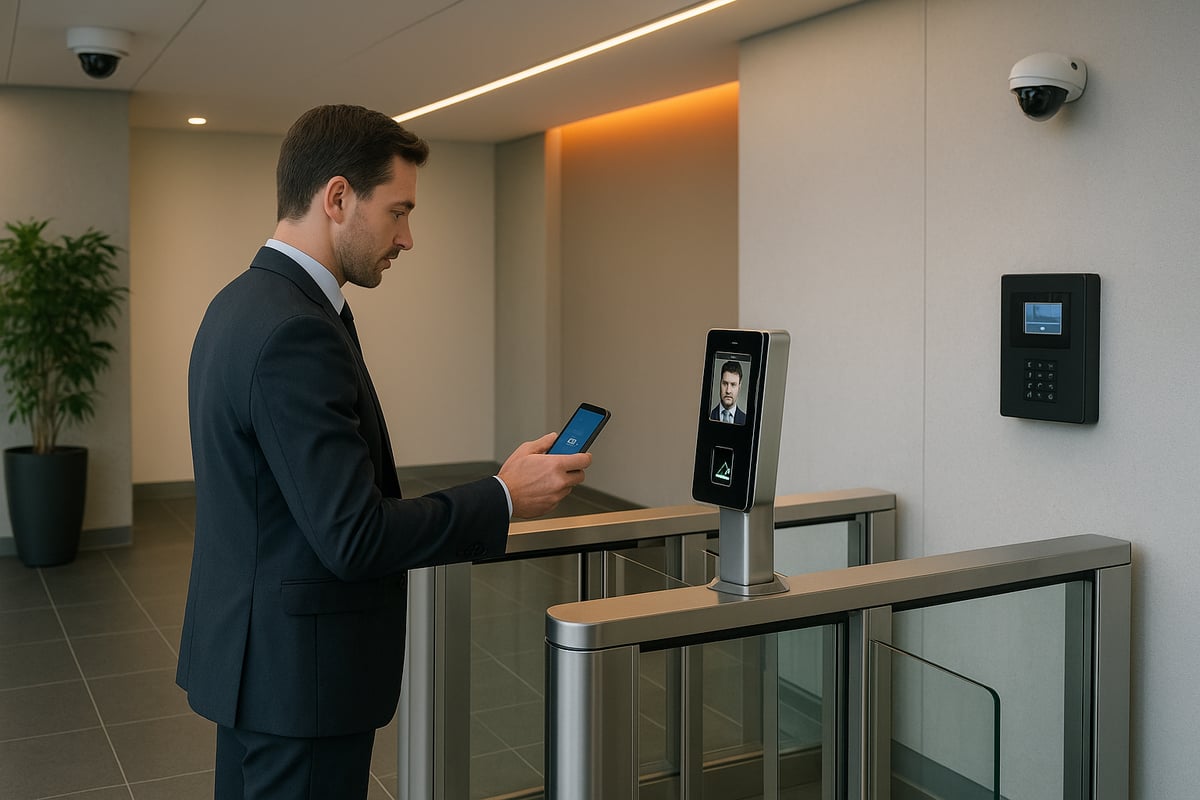
Biometric and Mobile Access Solutions
Biometric authentication is now a cornerstone of access control systems for business. Fingerprint, facial recognition, and iris scanning technologies deliver higher security by using unique personal identifiers. Alongside biometrics, mobile credentials are surging in popularity. Staff access doors using smartphones or wearables, reducing the risk of lost cards or forgotten PINs.
Offices across the UK are adopting facial recognition for seamless, touchless entry. This not only enhances convenience but also speeds up throughput in high-traffic areas. Recent data shows biometric adoption among UK businesses has risen by 30 percent since 2022. The combination of biometrics and mobile access is transforming building security and user experience.
Cloud-Based and Integrated Systems
Cloud-managed access control systems for business are now the preferred choice for organisations seeking scalability and centralised management. These systems allow businesses to administer access permissions, view real-time events, and automate updates from any location. Integration with CCTV, alarms, and building management systems creates a unified security ecosystem.
For multi-site companies, cloud-based platforms mean access can be managed remotely, saving time and reducing costs. Security is further strengthened with automatic software updates and encrypted data transmission. According to Top 5 access control trends for 2025, cloud integration is a defining trend shaping the future of business security.
AI and Analytics in Access Control
Artificial intelligence is revolutionising access control systems for business by enabling smarter threat detection and response. AI-powered analytics monitor access patterns, identifying anomalies such as tailgating or unusual entry times. Automated alerts notify security teams instantly, allowing for swift action.
Predictive maintenance features also ensure system reliability by flagging potential faults before they cause disruption. Over 60 percent of new installations now include AI capabilities. For example, corporate headquarters use AI to detect and address unauthorised access attempts, keeping operations secure and compliant.
Sustainability and Energy Efficiency
Modern access control systems for business are designed with environmental responsibility in mind. Manufacturers now prioritise eco-friendly materials and energy-saving components. Smart controls automatically adjust lighting and HVAC systems based on occupancy, helping reduce overall power consumption.
These innovations support compliance with green building standards such as BREEAM. By integrating sustainable practices, businesses not only protect their premises but also contribute to broader environmental goals. Access control is becoming a key part of a company’s sustainability strategy.
Step-by-Step Guide to Implementing Access Control in Your Business
Implementing access control systems for business is a strategic process that requires careful planning and execution. By following a structured approach, organisations can enhance security, improve operational efficiency, and future-proof their premises against emerging threats. Below is a practical step-by-step guide to help you navigate the implementation journey.

Assessing Security Needs and Risks
Begin by conducting a thorough assessment of your business’s unique security requirements. Identify areas that house sensitive assets, such as server rooms, warehouses, or executive offices. Engage key stakeholders, including HR, IT, and facilities management, to gather diverse perspectives on potential vulnerabilities.
Use tools like security audits and vulnerability scans to pinpoint high-risk entry points. For example, a warehouse may need stricter access to stockrooms, while office spaces might prioritise executive suites. Mapping these priorities will ensure your access control systems for business align with actual risks and operational needs.
- Identify sensitive zones
- Engage multidisciplinary teams
- Utilise security audit tools
A detailed risk assessment forms the foundation for a robust security strategy.
Designing the Right System
Once needs are clear, choose between standalone, networked, or cloud-based access control systems for business. Select credentials that fit your environment, whether keycards, biometrics, PIN codes, or mobile credentials. Cloud-based solutions are increasingly popular, offering remote management and scalability.
Consider how the system will integrate with existing security infrastructure, such as CCTV or fire alarms. For instance, integrating access control with fire alarm systems ensures compliance and safety. According to Access control trends in 2025, cloud-based and integrated systems are becoming the standard for businesses seeking flexibility and future readiness.
- Match system type to business size and needs
- Prioritise scalability for growth
- Plan for seamless integration
Thoughtful system design sets the stage for effective, long-term protection.
Installation and Configuration
Decide whether to use professional installers or opt for a DIY approach. Professional installation is typically recommended for complex access control systems for business, reducing risk and ensuring compliance. Plan the rollout to minimise operational disruption, perhaps by phasing installation across different departments.
Customise access levels and schedules for various employee groups. Rigorous system testing and validation are critical to catch issues early. For example, large office complexes often implement phased rollouts to maintain security during transition.
- Professional installation vs DIY
- Phased implementation
- Rigorous testing and validation
Careful configuration ensures the system functions as intended from day one.
Training and Ongoing Maintenance
Train staff on how to use the new system and understand security protocols. Schedule regular maintenance and software updates to keep access control systems for business effective and secure. Plan for future upgrades and ensure staff remain informed about evolving best practices.
Ongoing education and upkeep will help your security investment deliver lasting value.
Compliance, Standards, and Legal Considerations for 2025
Keeping up with compliance and legal requirements is essential for any business deploying access control systems for business. As regulations evolve, meeting the latest security, data protection, and safety standards will be a top priority in 2025.
UK and International Security Standards
Compliance with UK and international standards is non-negotiable for access control systems for business. Leading frameworks include NSI, BAFE, and ISO, each setting benchmarks for security and quality. Working with certified providers is crucial, as they ensure your system meets insurance and regulatory expectations.
A prime example is the NSI Gold Continued Certification, which demonstrates a provider’s commitment to the highest industry standards. NSI Gold accreditation covers everything from installation practices to ongoing system maintenance.
Choosing accredited installers means your access control systems for business are more likely to be robust, reliable, and fully compliant. This level of assurance is especially important for businesses seeking to minimise risk and protect assets.
Data Protection and GDPR
When implementing access control systems for business, data protection and GDPR compliance must be at the forefront. These systems often collect sensitive personal data, such as biometric identifiers and access logs. Businesses are required to follow GDPR principles, including data minimisation, clear consent, and defined retention periods.
Secure storage and encrypted transmission of biometric data are essential to prevent unauthorised access or breaches. Regular audits help ensure only necessary data is kept, and that access logs are handled in a GDPR-compliant manner.
By prioritising data privacy, organisations can build trust with employees and visitors, while reducing the risk of regulatory penalties. Proper management of personal data is a cornerstone of responsible access control.
Health & Safety and Fire Regulations
Access control systems for business must never compromise health and safety. UK law, including the Regulatory Reform (Fire Safety) Order 2005, requires that emergency exits remain accessible at all times. This means access control should integrate seamlessly with fire alarms and evacuation protocols.
For example, fail-safe door releases automatically unlock during fire alarms, ensuring everyone can exit safely. Proper integration between access control and fire systems is not just best practice, but a legal obligation.
Regular testing and maintenance help guarantee these systems function correctly in an emergency. Compliance with health and safety standards protects both people and property, reinforcing the value of robust access control systems for business.
Choosing the Right Access Control Partner
Selecting the right partner for access control systems for business is a decision that shapes your long-term security, compliance, and operational efficiency. The right provider is more than just an installer; they are a strategic ally who will help your business achieve its security goals while navigating the complexities of technology and regulation.
Evaluating Providers and Installers
When considering access control systems for business, it is essential to evaluate providers on several criteria. Look for demonstrable experience, up-to-date industry knowledge, and a strong client portfolio. Accreditations such as NSI Gold, BAFE, and ISO are key indicators of quality and compliance. Aftercare and ongoing support services are crucial for system longevity and reliability.
Request site surveys and tailored proposals from multiple vendors. This allows for a clear comparison of solutions, pricing, and the ability to meet your unique needs. Be sure to review a provider’s Quality and Security Accreditations to ensure their standards align with your business requirements.
Logic Fire and Security: Trusted Access Control Solutions
Logic Fire and Security stands out as a premier provider of access control systems for business across the UK. Their expertise spans system design, installation, monitoring, and ongoing maintenance, ensuring comprehensive support at every stage. Accredited by BAFE, NSI Gold, and ISO, they deliver solutions that meet the highest standards of compliance and quality.

Their bespoke approach suits commercial premises, public sector organisations, and complex multi-site businesses. Logic Fire and Security’s reputation is built on trust, with blue-chip clients and public agencies relying on their tailored, end-to-end services.
Questions to Ask Before Committing
Before finalising your decision on access control systems for business, ask potential providers the following:
- What certifications and accreditations do you hold?
- Can the system scale with future business growth?
- What are your ongoing support and maintenance terms?
- How do you manage data privacy and cyber security?
- Is integration with existing security and fire systems possible?
These questions ensure you select a partner who can support your evolving business needs and regulatory obligations.
Future Trends and Security Insights for Access Control in 2025
Emerging trends in access control systems for business are redefining security strategies as we move into 2025. Businesses are seeking smarter, interconnected, and proactive solutions to stay ahead of both physical and digital threats.
The Rise of Smart Buildings and IoT Integration
Smart buildings are rapidly transforming the landscape for access control systems for business. Integrating IoT sensors and automation, these environments allow for dynamic management of entry points and instant response to security events. Businesses can now automate lockdowns, adjust lighting or climate based on occupancy, and monitor access in real time.
For example, a single dashboard can control access across multiple sites, optimising both security and energy efficiency. The adoption of mobile credentials and real-time monitoring is accelerating, as noted in Access control in 2025: top trends. This shift is making security more adaptive and user-centric.
Cybersecurity Threats and Countermeasures
As access control systems for business increasingly rely on digital networks, cybersecurity risks have become a primary concern. Sophisticated cyberattacks now target access points, aiming to exploit vulnerabilities in connected systems. To counter these threats, businesses are adopting encryption, regular software updates, and network segmentation.
The UK government is responding with stricter regulations, as highlighted in UK plans tougher cybersecurity laws, reinforcing the need for robust cyber defences in 2025. By implementing zero-trust security models, companies can limit exposure and maintain the integrity of their access control systems for business.
Predictive Analytics and Proactive Security
Predictive analytics is now at the forefront of access control systems for business. By leveraging real-time data, AI can identify unusual patterns and anticipate risks before they escalate. Automated alerts enable rapid response to unauthorised attempts, while system health monitoring ensures reliability.
For instance, predictive alerts can flag repeated failed access attempts, prompting immediate investigation. This proactive approach not only deters threats but also enhances overall operational resilience. Businesses embracing predictive analytics are better equipped to protect their assets and maintain compliance.
As you’ve seen, keeping your business secure in 2025 means staying ahead of evolving threats and embracing the latest access control technologies. Whether you’re looking to safeguard sensitive areas, ensure compliance, or streamline your operations, having expert guidance makes all the difference. If you’d like tailored advice or want to understand the best options for your unique needs, why not take the next step? You can Get a Free Site Survey and let Logic Fire and Security help you identify the most effective solutions for your business. Your security deserves nothing less.


